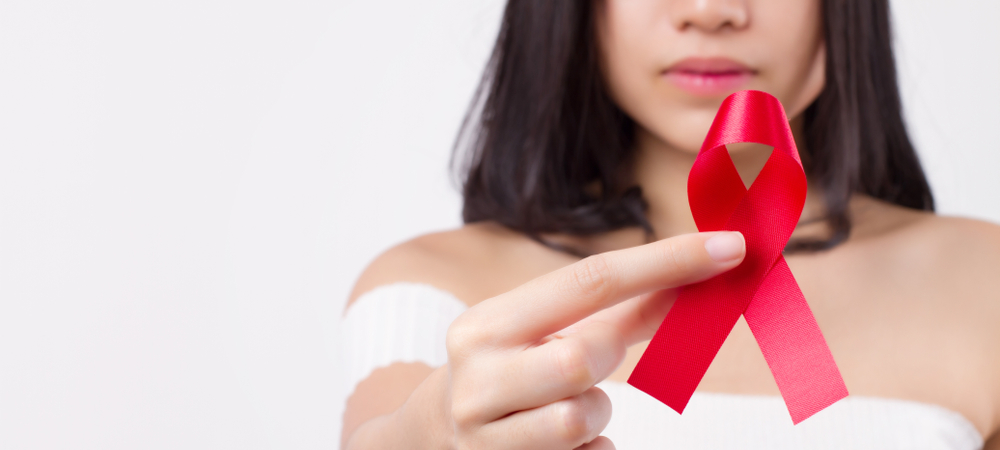Women and HIV

One in four people living with HIV in the United States is a woman. Women of all ages, races, and ethnicities can get HIV, but some women are more at risk than others.
All women can get HIV, but your risk for getting HIV is higher if you:
Have unprotected sex
Have injected illegal drugs, either now or in the past
Had sex with someone to get money or drugs in return or with someone who has traded sex for money or drugs
Had sex with someone who
- Has HIV
- Has sex with both men and women
- Injects drugs
Have another sexually transmitted infection (STI)
Had a blood transfusion between 1978 and 1985
In the United States, most women get HIV from having sex with a man.
Women are more likely than men to get HIV during vaginal sex because:
- The vagina has a larger surface area (compared with the penis) that can be exposed to HIV-infected semen.
- Semen can stay in your vagina for several days after sex. This means you are exposed to the virus longer.
- Having a vaginal yeast infection, bacterial vaginosis, or an untreated sexually transmitted infection (STI) makes HIV transmission more likely. This is because the yeast or bacterial infection or STI brings white blood cells (and therefore CD4 cells that can be infected with HIV) into the vaginal area. Small cuts on the skin of your vagina (common with genital ulcers from herpes or syphilis) are hard to notice but may allow HIV to pass into your body.
As a woman, you are more likely to get HIV during vaginal sex when:
- You are unaware of your partner's risk factors for HIV. Some men, for example, have sex with men as well as women but do not tell their female partners.
- Your male partner was recently infected. During this time, the amount of HIV in his semen is higher. Exposure during early infection may cause up to half of all HIV transmissions in the United States.2
- Your partners do not use male latex condoms or you do not use female condoms correctly every time you have sex.
- You have a history of sexual abuse, which can lead to riskier future behavior.
- You have sex with multiple partners or have sex with someone who is having sex with multiple partners.
- You have sex in exchange for money or drugs.
- You misuse drugs or alcohol before or during sex.
Women who use injection drugs or share needles or syringes and other injection equipment are at high risk for HIV. In fact, sharing needles is the second most common way that HIV is spread. (Sex is the most common way that HIV is spread.) Use of injected drugs also raises your risk for risky behaviors, such as not using a condom during sex. In a study of U.S. cities with high levels of HIV, 72% of women who injected drugs reported having sex without a condom in the past year.
If you use injection drugs, talk to your doctor about medicine, called pre-exposure prophylaxis (PrEP), to prevent getting HIV.
Women who have sex only with women might think they are safe from HIV. This type of HIV transmission is rare. If you are a woman and your female partner has HIV, you can get it if you have cuts, bleeding gums, or sores in your mouth and you give oral sex. It is also possible to spread HIV through menstrual blood and shared sex toys.
As a woman who has sex with women, it is also possible to get HIV if:
- You inject or your partner injects drugs with someone who has HIV
- You have or your partner has sex with a man who has HIV
- You are trying to get pregnant and use semen that has not been tested for HIV or sexually transmitted infections (STIs)
Lower your risk of getting HIV or passing it to your partner:
- Know your HIV status and your partner's HIV status.
- Take steps to protect yourself and others from HIV.
- Use latex condoms correctly and every time if you have sex with men.
- Use dental dams correctly.
- Never share sex toys.
Young women are at risk for HIV:
- According to a 2013 survey, only half of female high school students used a condom the last time they had sex. Only one in eight female high school students in the study had ever been tested for HIV.
- Younger women are more likely to have a sexually transmitted infection (STI). Having an untreated STI makes HIV transmission more likely. An untreated vaginal yeast or bacterial infection can also increase the risk of transmission. This is because the infection brings white blood cells (and therefore CD4 cells that can be infected with HIV) into the area. This is especially true for women, because small cuts on the skin of the vagina are hard to notice but may allow HIV to pass into your body.
- Teen girls and younger women are at higher risk for HIV infection than adult women, because their reproductive tract is still developing.
Women over 50 are still at risk for HIV. Older women are more likely than younger women to be diagnosed with HIV much later after they are first infected.
This may be because older women may think they do not need condoms, because they do not worry about getting pregnant. They may not talk about safe sex with their doctors or partner or get tested regularly for HIV and other sexually transmitted infections (STIs). Their doctors may also not suspect their symptoms could be caused by HIV. A later diagnosis can mean a later start to treatment and possibly more damage to your immune system. It can also raise the risk of spreading HIV to other people.
You can get HIV at any age. In fact, the decrease in hormone levels during and after menopause means your vagina will probably not be as lubricated (wet) as it used to be. This means that you have a greater risk for tiny cuts in your vagina during sex that can make it easier for HIV to get in.
Other health concerns
Older women with HIV also need to think about other health problems, such as heart disease and osteoporosis. If you have HIV, talk to your doctor about steps you can take to lower your risk of these problems. Ask about screening tests you might need as you age.
Women of color, especially African-American and Hispanic women, are disproportionately affected by HIV.
- African-American women made up more than 61% of new HIV infections among women in 2015 but are only 14% of the female population in the United States. African-American women face the highest risk of HIV and other sexually transmitted infections (STIs) compared with women of other groups. However, many African-American women do not know their HIV status. Poverty, stigma, and fear of discrimination may prevent women from getting tested or seeking care if infected.
- Hispanic women made up 15% of new HIV infections among women in 2015. Cultural challenges may raise Hispanic women's risk for HIV. Hispanic women may avoid seeking testing, counseling, or treatment if infected because of their immigration status, stigma, or fear of discrimination. Poverty may also prevent Hispanic women from getting care.
Act Against AIDS: Take Charge. Take the Test.
Take Charge. Take the Test.™ urges African-American women to get tested for HIV. The program is part of the Act Against AIDS campaign by the Centers for Disease Control and Prevention. The effort helps you recognize your risk of getting HIV and the need for HIV testing. It provides you with the information and help you need to take charge of your life — whatever your HIV test result.
References
- Centers for Disease Control and Prevention. (2016). HIV in the United States: At A Glance.
- Health Resources and Services Administration. (2013). A Guide to the Clinical Care of Women with HIV.
- Centers for Disease Control and Prevention. (2016). HIV Surveillance Report, Vol. 27.
- Brenner, B.G., Roger, M., Routy, J.P., Moisi, D., Ntemgawa, M., Matte, C., et al. (2007). High rates of forward transmission events after acute/early HIV-1 infection. Journal of Infectious Diseases; 195 (7): 951–959.
- Centers for Disease Control and Prevention. (2015). HIV and Injection Drug Use.
- Centers for Disease Control and Prevention. (2014). Likely Female-to-Female Sexual Transmission of HIV — Texas, 2012. MMWR; 63(10): 209–212.
- Centers for Disease Control and Prevention. (2014). Youth Risk Behavior Surveillance — United States, 2013. MMWR; 63(4).
- Centers for Disease Control and Prevention. (2016). HIV Among Youth.
- Henry-Reid, L.M., Martinez, J. (2008). Care of the adolescent with HIV. Clinical Obstetrics and Gynecology; 8(51): 319–328.
- Centers for Disease Control and Prevention. (2016). HIV Among People Aged 50 and Over.
- Centers for Disease Control and Prevention. (2016). HIV Surveillance Report, Vol. 27.
- U.S. Census Bureau. (2015). Annual Estimates of the Resident Population by Sex, Race Alone or in Combination, and Hispanic Origin for the United States, States, and Counties: April 1, 2010 to July 1, 2014.
- Centers for Disease Control and Prevention. (2016). HIV Among African Americans.
Source
The Office on Women's Health in the U.S. Department of Health and Human Services
Content last updated November 21, 2018
